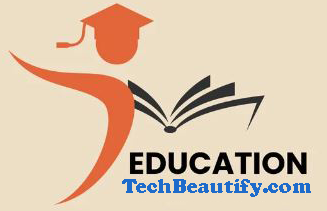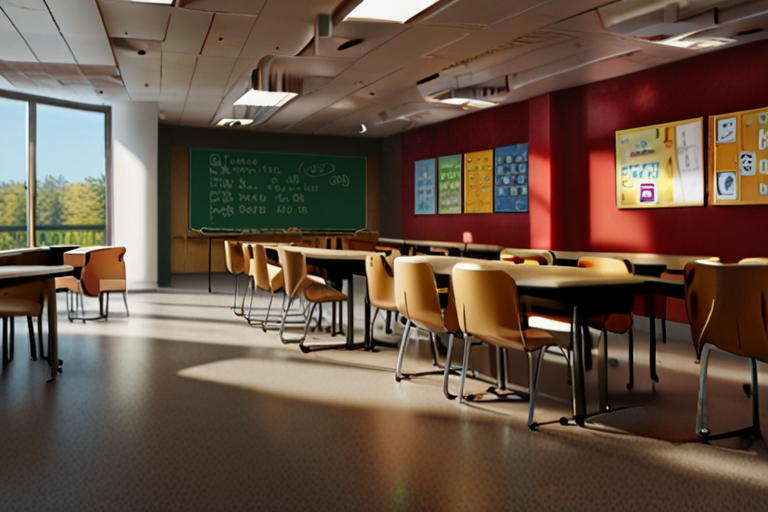Outline
- Introduction
- Overview of Virtual Reality (VR)
- Importance of VR in modern education
- Understanding Virtual Reality
- Definition and components of VR
- How VR works
- The Evolution of Virtual Reality in Education
- Early uses of VR in education
- Recent advancements and adoption
- Benefits of VR in Education
- Enhanced engagement and motivation
- Improved learning outcomes
- Experiential learning opportunities
- Accessibility and inclusivity
- Applications of VR in Different Educational Fields
- Science and Engineering
- Medicine and Healthcare
- History and Social Studies
- Arts and Design
- Case Studies of VR in Education
- Successful implementation in schools
- University-level applications
- VR in professional training
- Challenges and Limitations
- High costs and budget constraints
- Technical issues and maintenance
- Resistance to change and adoption hurdles
- Overcoming the Challenges
- Funding and grants
- Technical support and training
- Building a culture of innovation
- Future Trends in VR for Education
- Integration with AI and Machine Learning
- Expansion of VR content libraries
- Increased accessibility and affordability
- How to Implement VR in Your Classroom
- Getting started with VR technology
- Choosing the right VR tools and software
- Training educators and students
- Creating VR Content for Education
- Basics of VR content creation
- Collaborating with developers and educators
- Ensuring content aligns with curriculum standards
- Measuring the Impact of VR on Learning
- Assessment tools and methods
- Analyzing student feedback and performance
- Long-term impact studies
- The Role of Educators in VR Integration
- Teachers as facilitators of VR learning
- Professional development opportunities
- Encouraging student-led VR projects
- Ethical Considerations in VR Education
- Privacy and data security
- Ensuring ethical use of VR content
- Addressing screen time concerns
- Conclusion
- Recap of key points
- The transformative potential of VR in education
- Call to action for educators and policymakers
- FAQs
- What is the cost of implementing VR in schools?
- How can VR improve student engagement?
- Are there any risks associated with VR in education?
- What are some recommended VR tools for classrooms?
- How can teachers get trained in using VR technology?
Virtual Reality in Education: Transforming Classroom Experiences
Introduction
Imagine walking through the ancient ruins of Rome, not through pictures in a textbook, but as if you were actually there, feeling the weight of history around you. Welcome to the future of education, where Virtual Reality (VR) is transforming the way students learn and interact with the world. VR is not just a tech gimmick; it’s a powerful tool that brings lessons to life, making learning an immersive and engaging experience. Let’s dive into how VR is revolutionizing classrooms and reshaping educational landscapes.
Understanding Virtual Reality
So, what exactly is VR? In simple terms, VR is a computer-generated environment that lets you experience and interact with a 3D world that isn’t real. This is achieved through a combination of VR headsets, sensors, and controllers. When you put on a VR headset, you’re transported to a different world, where your movements and actions are mirrored in this virtual space, creating a sense of presence and immersion.
The Evolution of Virtual Reality in Education
The journey of VR in education started modestly, with early applications focusing on basic simulations and virtual tours. However, with technological advancements, VR has evolved significantly. Today, schools and universities across the globe are adopting VR to offer interactive and engaging learning experiences that were unimaginable a few years ago.
Benefits of VR in Education
Why all the hype about VR in education? There are several compelling reasons:
- Enhanced Engagement and Motivation: VR captures students’ attention like no other tool. When learning becomes an adventure, students are more likely to stay engaged and motivated.
- Improved Learning Outcomes: Studies show that VR can help improve knowledge retention and understanding. Experiencing concepts in a virtual environment makes them easier to grasp and remember.
- Experiential Learning Opportunities: VR provides hands-on learning experiences without the limitations of the physical world. Imagine chemistry students conducting virtual experiments without the risks associated with real chemicals.
- Accessibility and Inclusivity: VR can make learning more accessible. For students with disabilities, VR can offer customized learning experiences that cater to their specific needs.
Applications of VR in Different Educational Fields
VR’s versatility means it can be applied across various disciplines:
- Science and Engineering: Students can explore complex scientific concepts and engineering principles through interactive simulations and 3D models.
- Medicine and Healthcare: Medical students can practice surgeries and procedures in a risk-free virtual environment, enhancing their skills and confidence.
- History and Social Studies: VR can transport students to different historical periods, allowing them to witness events and cultures firsthand.
- Arts and Design: Aspiring artists and designers can create and manipulate virtual objects, experimenting with new techniques and ideas in a limitless virtual space.
Case Studies of VR in Education
There are numerous success stories where VR has made a significant impact:
- Schools: Many K-12 schools have integrated VR into their curricula, offering students virtual field trips to places like the Great Wall of China or the surface of Mars.
- Universities: Higher education institutions are using VR for complex subjects like anatomy, where students can explore the human body in detail.
- Professional Training: Industries like aviation and manufacturing use VR to train employees, providing hands-on experience without real-world risks.
Challenges and Limitations
Despite its potential, VR in education faces several challenges:
- High Costs and Budget Constraints: VR equipment and content can be expensive, making it difficult for some schools to afford.
- Technical Issues and Maintenance: VR systems require regular maintenance and troubleshooting, which can be a barrier for schools without dedicated technical support.
- Resistance to Change and Adoption Hurdles: Educators and institutions may be resistant to adopting new technologies due to a lack of familiarity or fear of disrupting traditional teaching methods.
Overcoming the Challenges
Addressing these challenges involves:
- Funding and Grants: Schools can seek funding from government programs, private grants, and partnerships with tech companies to afford VR technology.
- Technical Support and Training: Providing adequate training for educators and ensuring technical support can help smooth the transition to VR-based learning.
- Building a Culture of Innovation: Encouraging a mindset that embraces new technologies and innovative teaching methods is crucial for successful VR integration.
Future Trends in VR for Education
The future of VR in education looks promising, with several exciting trends on the horizon:
- Integration with AI and Machine Learning: Combining VR with AI can create personalized learning experiences that adapt to individual student needs.
- Expansion of VR Content Libraries: As more educational content becomes available in VR, the scope of what can be taught using this technology will expand.
- Increased Accessibility and Affordability: Advances in technology and increased competition are likely to make VR more affordable and accessible to schools worldwide.
How to Implement VR in Your Classroom
Ready to bring VR into your classroom? Here’s how:
- Getting Started with VR Technology: Research and choose the right VR hardware and software that fits your educational needs and budget.
- Choosing the Right VR Tools and Software: Look for educational VR content that aligns with your curriculum and enhances your teaching objectives.
- Training Educators and Students: Invest in training programs for both teachers and students to ensure they are comfortable and proficient with the technology.
Creating VR Content for Education
If you want to go a step further, consider creating your own VR content:
- Basics of VR Content Creation: Learn the fundamentals of VR content creation, from 3D modeling to programming.
- Collaborating with Developers and Educators: Work with VR developers to create educational content that meets your specific needs.
- Ensuring Content Aligns with Curriculum Standards: Make sure the VR content you create or use aligns with educational standards and learning objectives.
Measuring the Impact of VR on Learning
To ensure VR is making a positive impact, it’s essential to measure its effectiveness:
- Assessment Tools and Methods: Use quizzes, tests, and interactive assessments to gauge student understanding and engagement.
- Analyzing Student Feedback and Performance: Regularly collect and analyze feedback from students to understand their experiences and improve the VR content.
- Long-Term Impact Studies: Conduct studies to evaluate the long-term benefits of VR on learning outcomes and student development.
The Role of Educators in VR Integration
Educators play a pivotal role in the successful integration of VR:
- Teachers as Facilitators of VR Learning: Educators should act as guides, helping students navigate and make the most of VR experiences.
- Professional Development Opportunities: Encourage teachers to attend workshops and training sessions to stay updated on the latest VR technologies and teaching strategies.
- Encouraging Student-Led VR Projects: Motivate students to take initiative and create their own VR projects, fostering creativity and independent learning.
Ethical Considerations in VR Education
As with any technology, there are ethical considerations to keep in mind:
- Privacy and Data Security: Ensure that student data collected through VR platforms is secure and used ethically.
- Ensuring Ethical Use of VR Content: Monitor the use of VR content to ensure it is appropriate and aligns with educational goals.
- Addressing Screen Time Concerns: Balance VR activities with traditional learning methods to prevent excessive screen time.
Conclusion
Virtual Reality has the power to transform education by making learning more interactive, engaging, and accessible. While there are challenges to overcome, the potential benefits far outweigh the hurdles. By embracing VR, educators can create dynamic and immersive learning experiences that prepare students for the future. It’s time to step into the virtual world and unlock new possibilities for education.
FAQs
- What is the cost of implementing VR in schools? The cost can vary widely depending on the type of VR equipment and content. Basic setups may cost a few hundred dollars, while more advanced systems can run into the thousands. Schools can explore grants and partnerships to offset costs.
- How can VR improve student engagement? VR makes learning interactive and immersive, which can capture students’ attention more effectively than traditional methods. By making lessons fun and engaging, students are more likely to stay motivated and participate actively.
- Are there any risks associated with VR in education? While VR offers many benefits, there are potential risks such as eye strain, motion sickness, and the overuse of technology. It’s important to monitor usage and ensure students take regular breaks.
- What are some recommended VR tools for classrooms? Some popular VR tools for education include Google Expeditions, Oculus Rift, HTC Vive, and ClassVR. Each offers a range of educational content and interactive experiences.
- How can teachers get trained in using VR technology? Teachers can attend workshops, online courses, and training sessions offered by VR providers and educational organizations. Continuous professional development is key to effectively integrating VR into the classroom.

